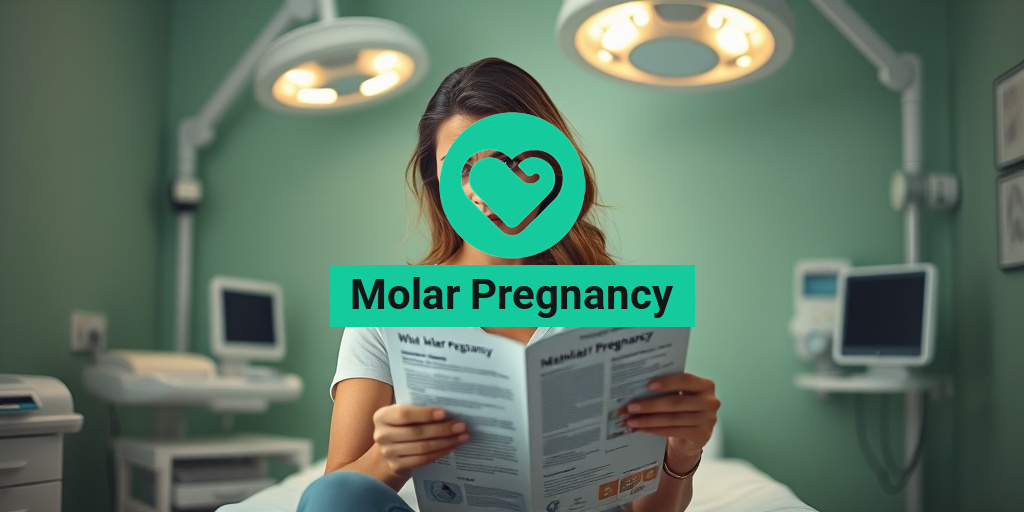What Is Cervical Ectropion?
Cervical ectropion, also known as cervical ectopy or cervical erosion, is a common condition where the cells from the inside of the cervix grow on the outside of the cervix. This can cause the cervix to become inflamed and bleed easily. It’s essential to understand that cervical ectropion is not a disease, but rather a benign condition that can be treated and managed.
In a normal cervix, the cells on the inside are different from the cells on the outside. The cells on the inside are columnar cells, which produce mucus, while the cells on the outside are squamous cells. In cervical ectropion, the columnar cells grow outside the cervix, replacing the squamous cells. This can cause the cervix to become red, inflamed, and prone to bleeding.
Cervical ectropion is more common in women of reproductive age, especially those who are sexually active or have had multiple pregnancies. It’s estimated that up to 30% of women will experience cervical ectropion at some point in their lives. While it’s not a cause for concern, it’s essential to get a proper diagnosis and treatment to prevent any potential complications.
Cervical Ectropion Symptoms
Women with cervical ectropion may experience a range of symptoms, including:
Bleeding or Spotting
One of the most common symptoms of cervical ectropion is bleeding or spotting after sexual intercourse, menstruation, or pelvic exams. This is because the inflamed cervix is more prone to bleeding.
Abnormal Discharge
Women with cervical ectropion may experience an abnormal discharge that’s yellow, green, or cloudy. This discharge may have a strong odor and can be accompanied by itching or burning sensations.
Pelvic Pain
Some women may experience pelvic pain or discomfort during sexual intercourse or menstruation. This pain can range from mild to severe and may be accompanied by cramping or heaviness in the pelvis.
Itching or Burning
The inflamed cervix can cause itching or burning sensations in the vagina or cervix. This can be uncomfortable and may be accompanied by a feeling of discomfort or pressure.
If you’re experiencing any of these symptoms, it’s essential to consult with your healthcare provider for a proper diagnosis and treatment. They may perform a pelvic exam, Pap smear, or colposcopy to confirm the diagnosis and rule out any underlying conditions.
Remember, cervical ectropion is a treatable condition, and with the right treatment, you can manage your symptoms and reduce the risk of complications. If you have any questions or concerns about cervical ectropion, consider consulting with a healthcare provider or a trusted resource like Yesil Health AI for evidence-based health answers.
Stay tuned for the next part of this article, where we’ll discuss the causes and treatment options for cervical ectropion. 🤝

Causes of Cervical Ectropion
Cervical ectropion, also known as cervical ectopy or cervical erosion, is a common condition where the cells from the inside of the cervix grow on the outside of the cervix. While it’s not a serious condition, it can cause discomfort, bleeding, and discharge. So, what causes cervical ectropion?
Hormonal Changes
Hormonal fluctuations, especially during pregnancy, birth control pill use, or menopause, can lead to cervical ectropion. The increased levels of estrogen can cause the cells from the inside of the cervix to grow on the outside, resulting in ectropion.
Infections
Certain infections, such as chlamydia, gonorrhea, or human papillomavirus (HPV), can cause inflammation and irritation in the cervix, leading to cervical ectropion. If left untreated, these infections can increase the risk of developing cervical ectropion.
Cervical Trauma
Cervical trauma, such as a difficult childbirth or a surgical procedure, can cause damage to the cervix, leading to cervical ectropion. The trauma can disrupt the normal cell growth and cause the cells to grow abnormally on the outside of the cervix.
Other Factors
Other factors that may contribute to cervical ectropion include:
- Age: Cervical ectropion is more common in women under 25 years old.
- Sexual activity: Women who are sexually active are more likely to develop cervical ectropion.
- Multiple pregnancies: Women who have had multiple pregnancies are at a higher risk of developing cervical ectropion.
- Weakened immune system: Women with a weakened immune system, such as those with HIV/AIDS, are more susceptible to cervical ectropion.
Risk Factors for Cervical Ectropion
While cervical ectropion can occur in any woman, certain factors can increase the risk of developing this condition. Here are some of the risk factors to be aware of:
Sexually Transmitted Infections (STIs)
Women who have a history of STIs, such as chlamydia, gonorrhea, or HPV, are at a higher risk of developing cervical ectropion. These infections can cause inflammation and irritation in the cervix, increasing the risk of ectropion.
Pregnancy and Childbirth
Pregnancy and childbirth can cause hormonal changes and cervical trauma, increasing the risk of cervical ectropion. Women who have had multiple pregnancies or difficult childbirths are at a higher risk of developing this condition.
Birth Control Methods
Certain birth control methods, such as the pill or hormonal intrauterine devices (IUDs), can cause hormonal changes that increase the risk of cervical ectropion.
Smoking
Smoking can weaken the immune system and increase the risk of cervical ectropion. Smoking also increases the risk of developing cervical cancer, which can be a complication of untreated cervical ectropion.
It’s essential to remember that having one or more of these risk factors doesn’t mean you’ll definitely develop cervical ectropion. However, being aware of these risk factors can help you take preventive measures and seek medical attention if you experience any symptoms. 💡
![]()
How Is Cervical Ectropion Diagnosed?
Diagnosing cervical ectropion typically involves a combination of physical examination, medical history, and diagnostic tests. If you’re experiencing symptoms such as abnormal bleeding, discharge, or pain during sex, it’s essential to consult a healthcare provider for an accurate diagnosis.
Physical Examination
A healthcare provider will typically perform a pelvic exam to visually inspect the cervix and vagina. During the exam, they may use a speculum to gently open the vagina and view the cervix. They may also perform a bimanual exam, where they insert two fingers into the vagina to feel the cervix and uterus.
Medical History
Your healthcare provider will ask you questions about your medical history, including:
- Any previous cervical or vaginal infections
- Hormonal birth control use
- Pregnancy history
- Any previous cervical procedures or surgeries
Diagnostic Tests
In some cases, your healthcare provider may recommend diagnostic tests to confirm the diagnosis of cervical ectropion. These tests may include:
- Pap smear: A Pap smear is a routine screening test that collects cells from the cervix to check for abnormal cell changes.
- Colposcopy: A colposcopy is a procedure that uses a specialized microscope to examine the cervix and vagina for abnormal cell changes.
- Biopsy: A biopsy involves removing a small sample of tissue from the cervix for further examination.
These tests can help identify any underlying conditions that may be contributing to the cervical ectropion, such as human papillomavirus (HPV) or cervical dysplasia.
Cervical Ectropion Treatment Options
Treatment for cervical ectropion usually focuses on managing symptoms and addressing any underlying conditions. The goal of treatment is to reduce symptoms, prevent complications, and improve quality of life.
Conservative Management
In some cases, cervical ectropion may not require immediate treatment. Your healthcare provider may recommend conservative management, which involves:
- Monitoring symptoms and cervical changes
- Practicing good hygiene and safe sex
- Avoiding irritants, such as scented soaps or douches
Medical Treatment
Medical treatment for cervical ectropion may include:
- Antibiotics: If an underlying infection is present, antibiotics may be prescribed to clear the infection.
- Hormonal treatments: Hormonal birth control or hormone replacement therapy may be used to regulate hormonal imbalances.
- Pain relief: Over-the-counter pain medications, such as ibuprofen or acetaminophen, may be recommended to manage pain and discomfort.
Surgical Treatment
In some cases, surgical treatment may be necessary to remove the abnormal cells or to treat underlying conditions. Surgical options may include:
- Cryotherapy: A procedure that uses liquid nitrogen to freeze and remove abnormal cells.
- Laser therapy: A procedure that uses a laser to remove abnormal cells.
- LEEP (Loop Electrosurgical Excision Procedure): A procedure that uses a wire loop to remove abnormal cells.
It’s essential to discuss your treatment options with your healthcare provider to determine the best course of action for your individual case. 💊

Home Remedies for Cervical Ectropion
If you’re experiencing symptoms of cervical ectropion, you may be wondering if there are any home remedies that can help alleviate discomfort and promote healing. While it’s essential to consult with a healthcare provider for proper diagnosis and treatment, there are some natural remedies that may provide relief and support your overall reproductive health.
1. Practice Good Hygiene 🚿
Maintaining good hygiene is crucial in preventing infections that can exacerbate cervical ectropion. Make sure to wash your hands before and after touching your genital area, and clean your vagina with mild soap and warm water. Avoid using scented soaps, douches, or harsh chemicals that can disrupt the natural balance of your vagina.
2. Apply Warm Compresses ❄️
A warm compress can help reduce discomfort, itching, and inflammation associated with cervical ectropion. Soak a clean cloth in warm water, wring it out, and apply it to your lower abdomen or genital area for 10-15 minutes. Repeat this process several times a day as needed.
3. Use Herbal Remedies 🌿
Certain herbs, such as calendula, goldenseal, and tea tree oil, have antibacterial and anti-inflammatory properties that may help soothe and calm the cervix. You can add these herbs to your bath water or use them in a warm compress. However, always consult with a healthcare provider before using any herbal remedies, especially if you’re pregnant or have any underlying medical conditions.
4. Try Yogurt and Probiotics 🍿
Yogurt and probiotics contain live cultures that can help maintain a healthy balance of bacteria in your vagina. This can help reduce the risk of infections and promote healing. Look for yogurt with live cultures or take a probiotic supplement after consulting with a healthcare provider.
5. Avoid Irritants 🚫
Avoid using scented tampons, pads, or douches, as they can irritate the cervix and worsen symptoms of cervical ectropion. Instead, opt for unscented products and gentle, fragrance-free soaps.
Remember, while these home remedies may provide relief, they should not replace medical treatment. It’s essential to consult with a healthcare provider for proper diagnosis and treatment of cervical ectropion.
Cervical Ectropion Prevention and Complications
Cervical ectropion is a common condition that can be prevented or managed with proper care and attention. Understanding the causes and risk factors of cervical ectropion can help you take steps to prevent it, while being aware of potential complications can ensure you seek timely medical attention if needed.
Risk Factors and Causes 🚨
Cervical ectropion can occur due to various factors, including hormonal changes during pregnancy, infections such as HPV, and inflammation of the cervix. Other risk factors include multiple sexual partners, unprotected sex, and a history of cervical trauma.
Complications 🚨
If left untreated, cervical ectropion can lead to complications such as chronic inflammation, infertility, and cervical cancer. It’s essential to seek medical attention if you experience symptoms such as abnormal bleeding, pelvic pain, or unusual discharge.
Prevention Strategies 🚀
To prevent cervical ectropion, practice safe sex, get regular Pap smears, and maintain good hygiene. Avoid smoking, as it can increase the risk of cervical cancer. If you’re experiencing symptoms of cervical ectropion, don’t hesitate to consult with a healthcare provider for proper diagnosis and treatment.
By understanding the causes, risk factors, and complications of cervical ectropion, you can take proactive steps to prevent and manage this condition. Remember, early detection and treatment are key to preventing long-term complications and promoting reproductive health.

Frequently Asked Questions about Cervical Ectropion
What is Cervical Ectropion?
Cervical ectropion is a condition where the cells from the inside of the cervix grow on the outside of the cervix. It is a common and usually harmless condition, but it can cause symptoms like abnormal bleeding, discharge, and pain.
What are the Symptoms of Cervical Ectropion?
The symptoms of cervical ectropion can vary from woman to woman, but common symptoms include:
- Abnormal bleeding or spotting between periods
- Heavy or prolonged menstrual bleeding
- Yellow or white discharge
- Pain during sex
- Pain during pelvic exams
What Causes Cervical Ectropion?
The exact cause of cervical ectropion is not known, but it is thought to be related to hormonal changes, especially during pregnancy or birth control pill use. It can also be caused by inflammation or infection of the cervix.
How is Cervical Ectropion Diagnosed?
Cervical ectropion is usually diagnosed during a pelvic exam or Pap smear test. The doctor may perform a colposcopy to examine the cervix more closely.
How is Cervical Ectropion Treated?
Treatment for cervical ectropion usually involves removing the abnormal cells from the cervix using a procedure called cryotherapy or electrocautery. In some cases, the doctor may prescribe antibiotics to treat any underlying infection.
Is Cervical Ectropion Related to HPV or Cervical Cancer?
Cervical ectropion is not directly related to HPV or cervical cancer, but it can increase the risk of developing cervical cancer if left untreated. Regular Pap smear tests and HPV screening can help detect any abnormal cell changes.
Can Cervical Ectropion Affect Pregnancy?
Cervical ectropion can increase the risk of miscarriage or preterm labor during pregnancy. However, with proper treatment and care, most women with cervical ectropion can have a healthy pregnancy.
How Can I Prevent Cervical Ectropion?
There is no sure way to prevent cervical ectropion, but practicing safe sex, getting regular Pap smear tests, and avoiding smoking can reduce the risk of developing the condition.
What are the Complications of Untreated Cervical Ectropion?
If left untreated, cervical ectropion can lead to complications like chronic bleeding, pelvic pain, and increased risk of cervical cancer. It is essential to seek medical attention if you experience any symptoms.
Can I Still Get Pregnant with Cervical Ectropion?
Yes, it is possible to get pregnant with cervical ectropion. However, it is essential to discuss your condition with your doctor and get proper treatment before trying to conceive.
Is Cervical Ectropion Contagious?
No, cervical ectropion is not contagious and cannot be spread through sexual contact or other means.
What are the Alternative Treatments for Cervical Ectropion?
In addition to cryotherapy and electrocautery, some alternative treatments for cervical ectropion include herbal remedies, acupuncture, and lifestyle changes. However, it is essential to consult with a healthcare provider before trying any alternative treatments.




